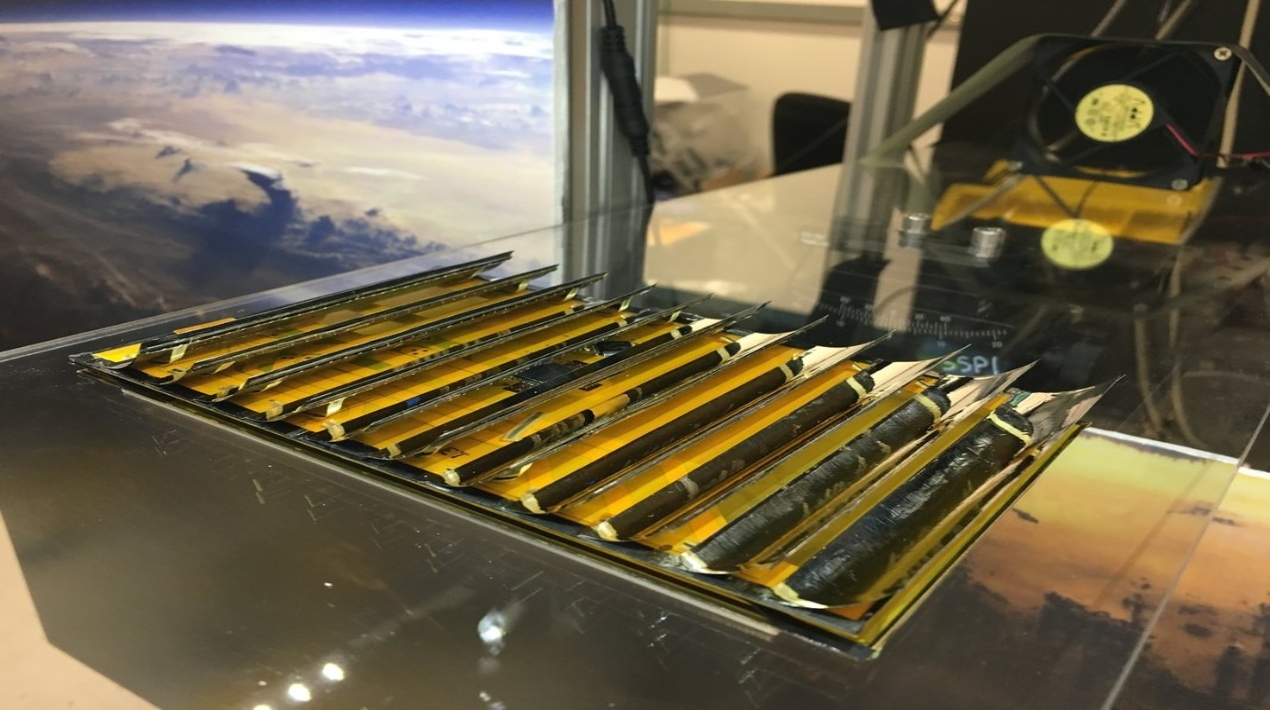
Once thought of as science fiction, technology is getting closer to being able to collect solar power in space and beam it to Earth to provide a global supply of clean, cheap energy.
Through the Space-based Solar Power Project (SSPP), a group of Caltech researchers is working to set up a group of modular spacecraft that can collect sunlight, turn it into electricity, and then send that electricity wirelessly wherever it is needed, even to places that don’t have reliable power right now.
“This is an extraordinary and unprecedented project. It exemplifies the boldness and ambition needed to address one of the most significant challenges of our time, providing clean and affordable energy to the world,” says Harry Atwater, an SSPP researcher and Otis Booth Leadership Chair of Caltech’s Division of Engineering and Applied Science.
Using solar power in space will require big steps forward in three main areas:
- A research team is developing ultralight, high-efficiency photovoltaics (light-to-electricity materials) that are suited for space conditions and compatible with integrated modular power conversion and transmission systems.
- Another research team is working on building low-cost, lightweight technology to convert direct current electricity to radio frequency power (used to transmit cell phone signals, for example) and send it to Earth as microwaves. The procedure is completely harmless, and the non-ionising radiation at the surface is far less hazardous than standing in the sun. Furthermore, in the event of damage or malfunction, the system might be swiftly shut off.
- Another group is developing foldable, ultrathin, and lightest space structures to support photovoltaics as well as the components required to convert, transmit, and direct radio frequency power.
The basic unit of the system envisioned by the researchers is a 4-by-4-inch tile weighing less than one-tenth of an ounce. Hundreds of thousands of these tiles would form a system of satellites like floating carpets, which, when unfurled, would produce a 3.5-square-mile solar collector.
The team developed and displayed a prototype tile over the course of two years. This is the essential modular component for capturing solar and transmitting power. This technique taught them many things about how to develop such highly interconnected and lightweight systems. They then created a second prototype that was 33% lighter than the initial one.
This tile is a fundamental component of the bigger system. It must be functionally complete, compatible, and scalable. It may sound easy, but it is intricate. These tiles are installed on a structure that is highly flexible and can be folded to fit within a launch vehicle. Once deployed, the structure expands, and the tiles create energy, convert it, and send it precisely where it is required and nowhere else.
In addition, the majority of contemporary spacecraft include solar arrays — photovoltaic cells attached to a carrier framework — but not with this material and not folded to the dimensions reached by the researchers. By employing innovative folding techniques inspired by origami, they can dramatically lower the launch dimensions of a massive spaceship. The packaging is so tight that it is virtually devoid of voids.
When space solar power becomes a reality, it will transform nature and the accessibility of energy so that it becomes ubiquitous and dispatchable. It can be sent wherever necessary. This energy redirection is accomplished without the use of any mechanical motion, relying solely on electrical means and a focusing array, making it exceedingly rapid.
















